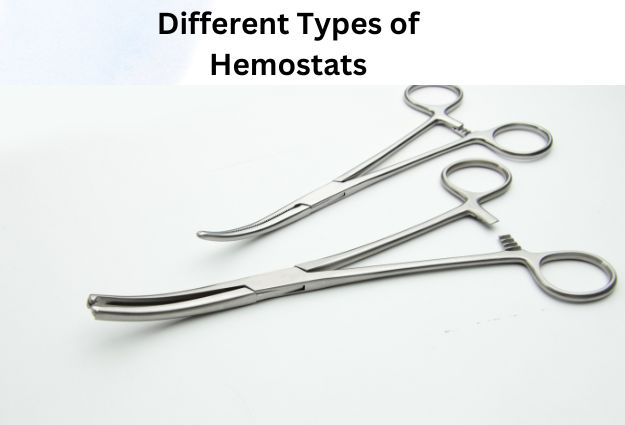
Enhancing Surgical Precision: A Comprehensive Guide to Hemostatic Forceps
Hemostasis, the control of bleeding during surgical procedures, stands as a pivotal challenge for surgeons worldwide. Recognizing this, the Department of Endoscopy at Kobe University, Japan, conducted a meticulous analysis of hemostatic forceps’ efficacy during gastric endoscopic submucosal dissection (ESD) treatments. The findings underscored the remarkable hemostatic prowess of these instruments, particularly highlighting the efficiency of Hemostatic Forceps in reducing hemostatic time without an uptick in adverse events.
Exploring Hemostatic Instruments: A Surgeon’s Arsenal
Surgeons rely on an array of hemastat tools to navigate the intricacies of blood flow control, essential for successful surgical outcomes. Let’s delve into the diverse spectrum types of hemostats frequently employed in surgical settings.
Understanding Hemostatic Forceps: A Closer Look
Hemostate forceps come in diverse patterns, tailored to suit varied surgical requirements. Among the notable types are:
Adson Forceps: Precision in Grasping
Adson Forceps, also known as “Locking Forceps,” feature a distinctive ratchet lock system. Available in straight and curved configurations, these forceps offer versatility across surgical approaches. Equipped with half-serrated, toothed, or T-shaped concave serrated tips, Adson Forceps excel in securely grasping vessels, tissues, and root tips, making them indispensable for surgical precision.
Artery Undermining Forceps: Tackling Cardiothoracic Challenges
Featuring toothed tips and ringlets with a ratchet mechanism, Artery Undermining Forceps provide robust clamping for dense tissues. Their serrated jaws ensure minimal damage to blood vessels, facilitating effective control of blood flow during cardiothoracic procedures.
Bainbridge Forceps: Precision Clamping for Surgical Maneuverability
Bainbridge Forceps boast long tapered jaws with longitudinal serrations, complemented by ratchet finger ring handles for enhanced control. These forceps excel in smooth tissue clamping, facilitating seamless manipulation during surgeries.
Crile Forceps: Versatility and Confidence in Surgical Procedures
Characterized by fully horizontally serrated jaws and vivid color coatings for improved visibility, Crile Forceps instill confidence in surgeons. These forceps are instrumental in laparoscopic practices, offering firm grasping for effective blood flow control.
Dandy Forceps: Minimizing Surgical Complications
With curved, half-serrated jaws and ergonomic finger ring handles, Dandy Forceps prioritize both efficacy and surgeon comfort. They play a crucial role in controlling bleeding and fluid flow, thereby mitigating surgical complications.
Ferguson Angiotribe Forceps: Ensuring Hemostasis Across Procedures
Featuring interlocking blades and cross-hatched handles, Ferguson Angiotribe Forceps offer steadfast hemostasis. Surgeons rely on these forceps to clamp vessels securely, curtailing subsequent blood flow with precision.
Gemini Mixter Forceps: Balancing Strength and Precision
Gemini Mixter Forceps, characterized by fully curved, serrated jaws and interconnected handles, epitomize strength and precision. These forceps excel in holding delicate vessels during intricate surgical procedures.
Hartman Forceps: Specialized Support for Left-Handed Surgeons
Crafted with serrated jaws and distinctive color coatings, Hartman Forceps cater to the needs of left-handed surgeons. Their narrow, pointed tips ensure precise clamping, making them invaluable in plastic and vascular surgeries.
Jacobson Forceps: Delicate Yet Effective
Boasting curved jaws with narrow vertical serrations, Jacobson Forceps offer a delicate yet effective grip. Surgeons frequently leverage these forceps in tonsillectomies and wound closure procedures for precise vessel manipulation.
Kelly Forceps: Versatility in Surgical Applications
With half-serrated tips and a reliable ratchet locking system, Kelly Forceps offer unparalleled versatility. Whether clamping medium-sized arteries or holding dense tissues, these forceps deliver consistent performance across surgical domains.
Kocher Forceps: Robust Grasping for Complex Procedures
Featuring serrated jaws and toothed tips, Kocher Forceps ensure robust tissue grasping without causing harm. Surgeons rely on these forceps in thyroid, intestinal, and gallbladder procedures for effective blood flow control.
Lovelace Forceps: Gynecological Precision
Lovelace Forceps, equipped with fully serrated jaws, excel in clamping vessels during gynecologic procedures. Their curved and straight patterns offer adaptability across surgical scenarios, minimizing blood loss.
Mikulicz Forceps: Adept Handling in Abdominal Surgeries
Characterized by half-serrated jaws and ratcheted ringlets, Mikulicz Forceps facilitate precise vessel clamping during abdominal surgeries. Surgeons leverage their unique design for effective peritoneal sac manipulation.
Mixter Forceps: Navigating Complex Anatomy
Featuring right-angled jaws with longitudinal serrations, Mixter Forceps excel in blunt tissue dissection. Surgeons rely on these forceps for holding tissues, blood vessels, and sutures in thoracic and hysterectomy procedures.
Mosquito Surgery instruments Precision in Fine Tissue Management
Renowned for their multipurpose design, Mosquito Forceps offer precision in grasping and dissecting fine tissues. Surgeons leverage their versatility in occluding bleeding and controlling blood flow across diverse surgical interventions.
Rochester Carmalt Forceps: Ensuring Secure Ligations
With long, wide jaws and longitudinal serrations, Rochester Carmalt Forceps prioritize secure ligations. Surgeons trust these forceps for grasping and cutting tissues, ensuring meticulous hemostasis.
Rochester Ochsner Forceps: Fine Control in Orthopedic Surgeries
Featuring serrated jaws with a precise 1×2 tooth pattern, Rochester Ochsner Forceps offer fine control in orthopedic procedures. Surgeons rely on their Crile hemostat use handles for precise vessel manipulation, minimizing intraoperative bleeding.
Schnidt Tonsil Forceps: Tailored for Tonsil Surgeries
Boasting a unique pattern of curved jaws with half-serrated design, Schnidt Tonsil Forceps offer specialized support in tonsil surgeries. Surgeons utilize these forceps for precise tissue manipulation and hemostasis, ensuring optimal surgical outcomes.
Unraveling the Utility of Hemostat Forceps: Applications and Advantages
Hemo stat serve as indispensable surgical instruments, pivotal in controlling blood flow and ensuring surgical precision. Key applications include:
- Hemorrhage Control: Facilitating the clamping of small blood vessels to mitigate hemorrhage risks.
- Tissue Manipulation: Enabling surgeons to securely grasp and manipulate tissues during wound care procedures.
- Fine Tissue Dissection: Offering precision in visualizing and exploring deeper wound areas, enhancing surgical accuracy.
- Cauterization and Ligation: Facilitating the secure holding of vessels for cauterization or ligation, crucial for effective hemostasis.
- Surgical Dissection: Supporting the fine dissection of tissues across diverse surgical interventions, ensuring optimal outcomes.
Acquiring Premium-Quality Hemostat dental A Trusted Solution
For practitioners seeking high-quality hemostat instrument



Leave a reply